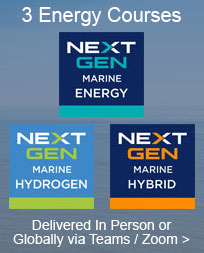Julie Carlton MBE - Seafarer Safety & Health Manager, Maritime and Coastguard Agency (MCA)
Julie Carlton joined the Department for Transport in 1987 and moved to the Marine Safety Agency (now the MCA) in 1995.
As Head of the Seafarer Safety and Health Branch since 2009, Julie has responsibility for seafarer health and safety policy, regulations and guidance including the Code of Safe Working Practices for Merchant Seafarers and liaison with the Health and Safety Executive.
She has the policy lead on living and working conditions for seafarers and fishermen, including implementation of the Maritime Labour Convention, 2006 (MLC) and the ILO Work in Fishing Convention, 2007 (ILO 188), which the UK ratified in 2013 and 2019 respectively. Julie is the current chair of the ILO’s Special Tripartite Committee on the MLC. She is also responsible for seafarer medical issues and the MCA’s Human Element strategy.
The Maritime & Coastguard Agency works to prevent the loss of life on the coast and at sea.
The MCA produce legislation and guidance on maritime matters, and provide certification to seafarers.
The MCA are a team of 1,050 staff and 3,500 volunteers with headquarters in Southampton UK. The MCA provide a 24 hour maritime search & rescue (SAR) service around the UK coast, and international SAR through HM Coastguard.
The MCA are responsible for: The safety of everybody in a vessel in UK waters. The safety of all seafarers on UK flagged vessels. Making sure all equipment on UK vessels is fit for purpose. Making sure all seafarers on UK vessels have correct documentation. The environmental safety of UK coast and waters. The accuracy of hydrographic data on UK charts. Overseeing coastal rescue volunteers, hydrographics, seafarer certification and the port state control inspection regime.
The Aims of Marine Guidance Notices for Controlling Whole Body Vibration Risks
There are three MCA MGNs relating to the health and safety risks from whole body vibration.
MGN 353: ‘The Merchant Shipping and Fishing Vessels (Control of Vibration at Work) Regulations 2007’. Sets out the legal requirements in the UK regulations which implement Directive 2002/44/EC on requirements for the protection of workers from the risks related to exposure to vibration at work.
MGN 436: ‘WHOLE-BODY VIBRATION: Guidance on Mitigating Against the Effects of Shocks and Impacts on Small Vessels.’. Provides guidance on mitigating the effects of whole-body vibration on small vessels, where there is a risk of injury, in particular severe shocks as a result of impacts. Guidance is provided to assist in improving the design of vessels to reduce the severity of the impact and to provide a suitable postural position for those onboard to enable them to brace effectively. There is also guidance for operators on reducing the impact through operational measures (training, pre-departure briefing, posture etc.).
MGN 446: ‘The Merchant Shipping and Fishing Vessels (Control of Vibration at Work) Regulations 2007 - Procedure for Seeking Exemptions.’: Provides guidance and a format for application for an exemption as provided for under the 2007 Regulations.
CLARIFICATION: The MCA wishes to clarify that MGN 446(M) is still current and the exemptions process is available for use, in accordance with legislation. However, the MCA encourages ship owners to focus on identifying the risks to seafarers from whole body vibration and taking measures to remove or mitigate the impacts, so as to reduce the risk as low as reasonably practicable.
This all looks very technical, but the underlying objective of the regulations is simple – to minimise the risk of harm to those working on ships from vibration at work. How does MCA view this and what do operators need to do to satisfy the requirements?











